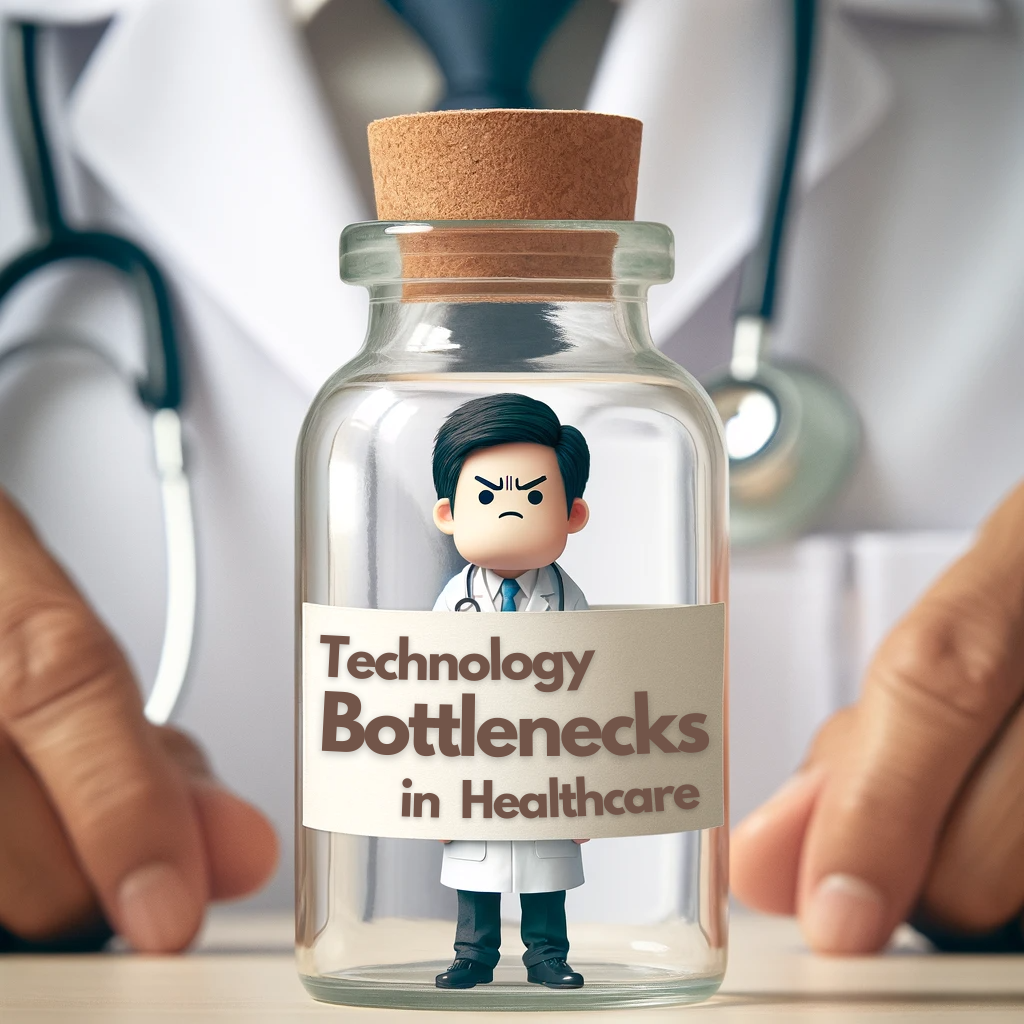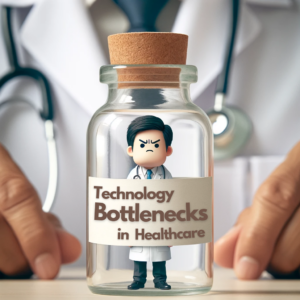
Technology plays a major role in delivering effective care. However, technology bottlenecks in healthcare can slow down workflows, hinder patient care, and strain resources. Understanding bottlenecks and how they can be addressed is crucial for healthcare organizations looking to optimize their operations and provide the best care to their patients.
Common Technology Bottlenecks in Healthcare
- Outdated Systems: Many healthcare institutions still rely on legacy systems not equipped to handle increasing volume and complexity of modern healthcare data. These systems can be slow, inefficient, and incompatible with newer technologies, leading to delays and errors in patient care.
- Data Silos: The fragmentation of healthcare data across different systems and departments creates significant challenges. When patient information is not easily accessible or shareable between healthcare providers, it can lead to inefficiencies and compromised patient care. No one likes copying and pasting large amounts of data regularly between different software tools and its terrible for productivity.
- Cybersecurity Vulnerabilities: With the growing reliance on digital records and the increasing sophistication of cyber threats, healthcare organizations face significant risks related to data breaches and cyberattacks. These vulnerabilities can lead to downtime, loss of patient trust, and possibly even legal repercussions.
- Insufficient IT Support: Healthcare providers often lack the necessary IT support to manage and troubleshoot technology systems effectively. Even if they have support, the systems they use can be so fragmented that no one group can understand and solve problems across them all. This drags on downtime and delays when technical issues arise.
- Compliance Challenges: Navigating the complex landscape of healthcare regulations and ensuring compliance can be a significant bottleneck. Technology solutions in the United States must adhere to various standards, including HIPAA, which can be time-consuming and resource-intensive.
How HealthSafeIT Addresses Technology Bottlenecks in Healthcare
The managed IT services and IT support offered by Stringfellow’s HealthSafeIT aim to address technology bottlenecks in healthcare by:
- Modernizing IT Infrastructure: Healthcare organizations can eliminate the inefficiencies of outdated technology by upgrading to modern, scalable, and flexible IT systems. This includes migrating to cloud-based solutions that offer greater accessibility and integration.
- Data Integration and Management: Solutions that enable the seamless sharing and integration of patient data across different systems can help break down data silos. This means healthcare providers have timely access to their information.
- Enhanced Cybersecurity: Rolling out better cybersecurity solutions can protect healthcare organizations from data breaches and cyber threats. This includes ongoing security audits, employee training, and advanced threat detection systems monitoring in the background keeping your clinics safe.
- Dedicated IT Support: Providing comprehensive IT support means technical issues are resolved quickly, which minimizes downtime and maintains the quality of patient care your patients deserve. Fast friendly support is possible, even for smaller groups, and it makes a huge difference.
- Compliance Assistance: Technology solutions tailored to healthcare help organizations meet regulatory requirements and ensure that all systems comply with relevant laws and standards.
Conclusions and Next Steps
Technology bottlenecks in healthcare are significant challenges that require strategic solutions. By understanding these bottlenecks and implementing effective IT solutions, healthcare organizations can enhance operations, improve patient care, and stay ahead.
HealthSafeIT and the whole Stringfellow Technology Group is standing by to help you navigate the pitfalls and perils of healthcare with our trusted playbook of tried and tested software, processes and people, seasoned across over 20 years of trials.
If this sounds like you, reach out and let’s discuss how we can help eliminate these bottlenecks with HealthSafeIT. Your staff and providers need better IT for reliable patient care.
Resources:

